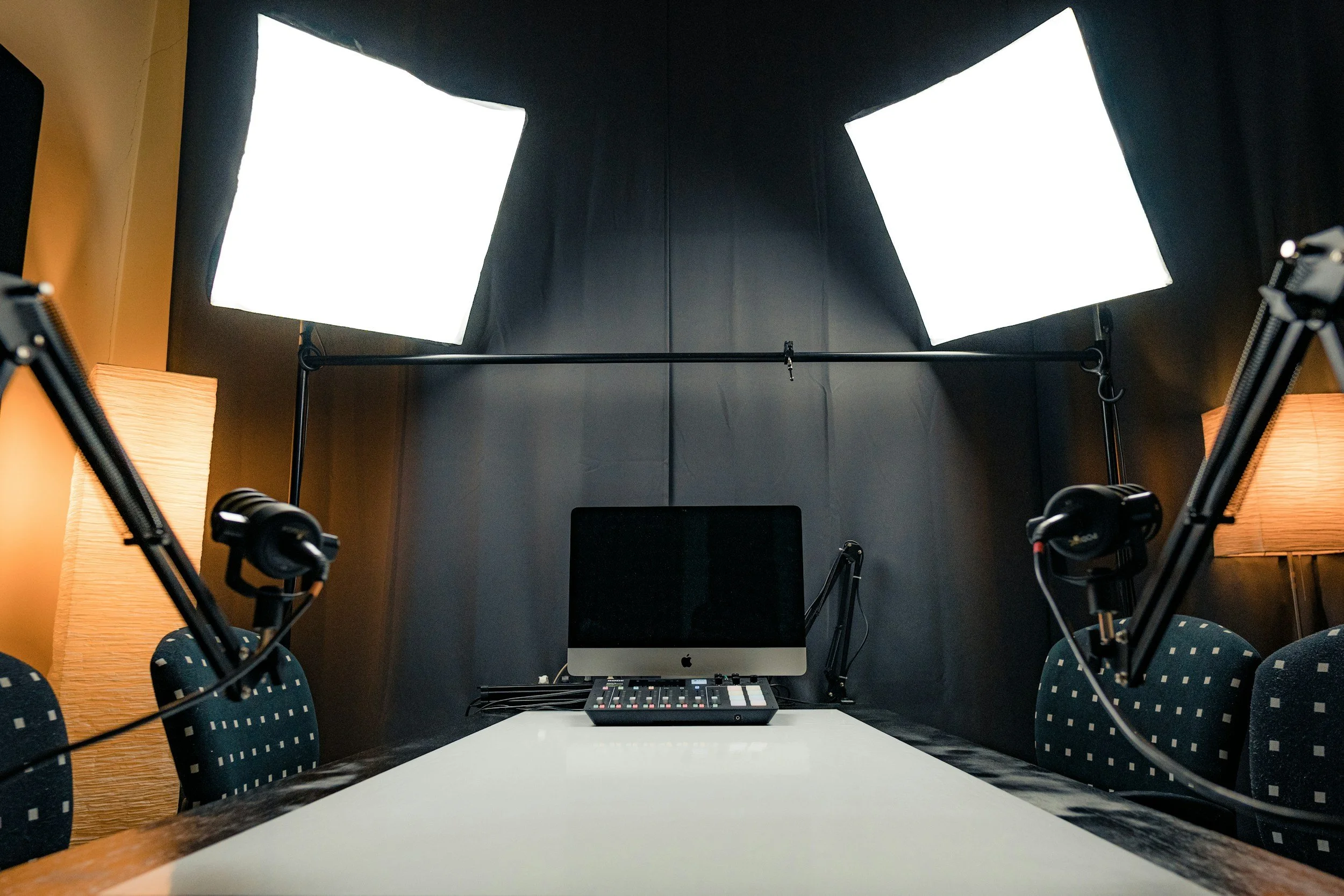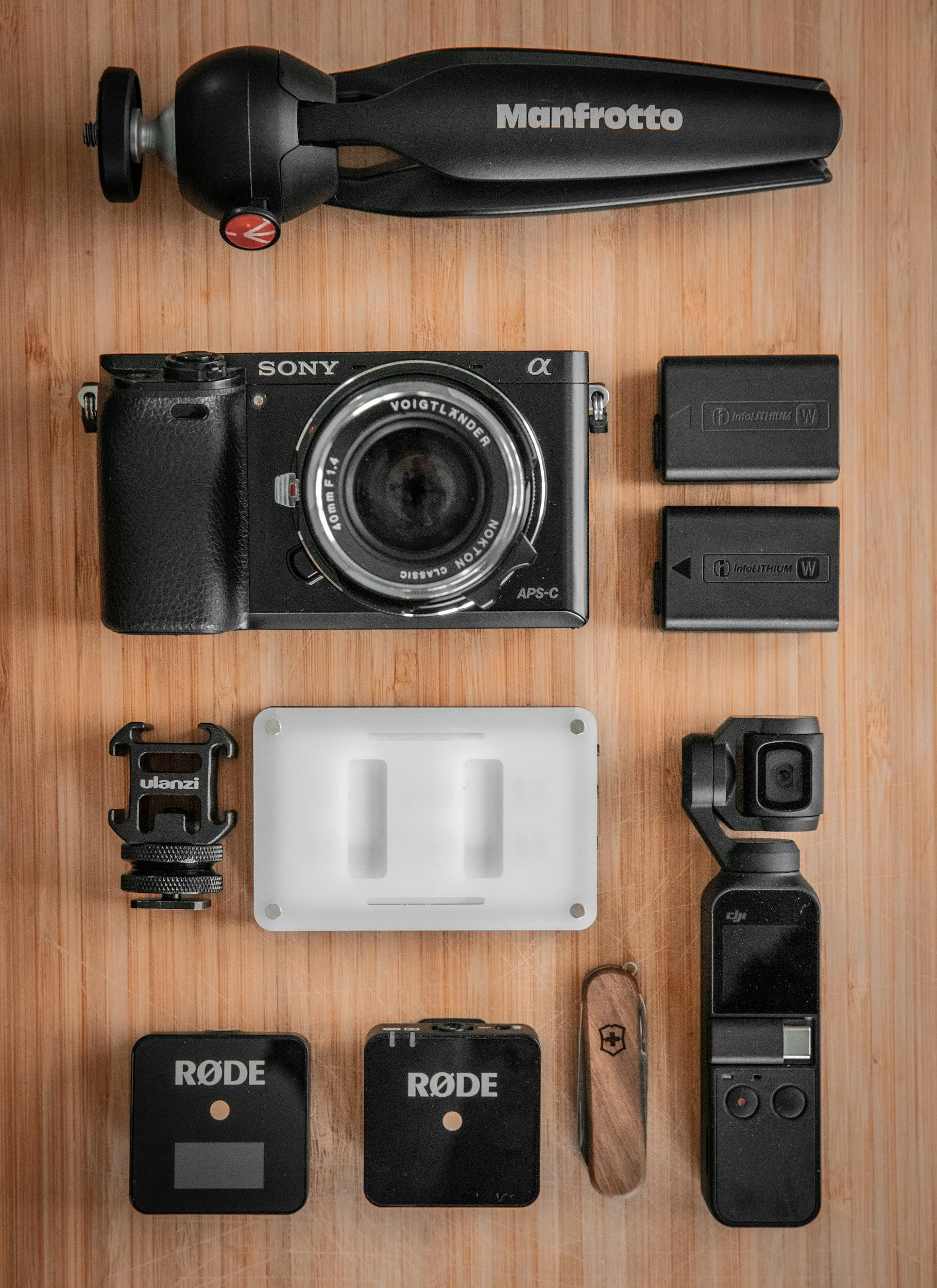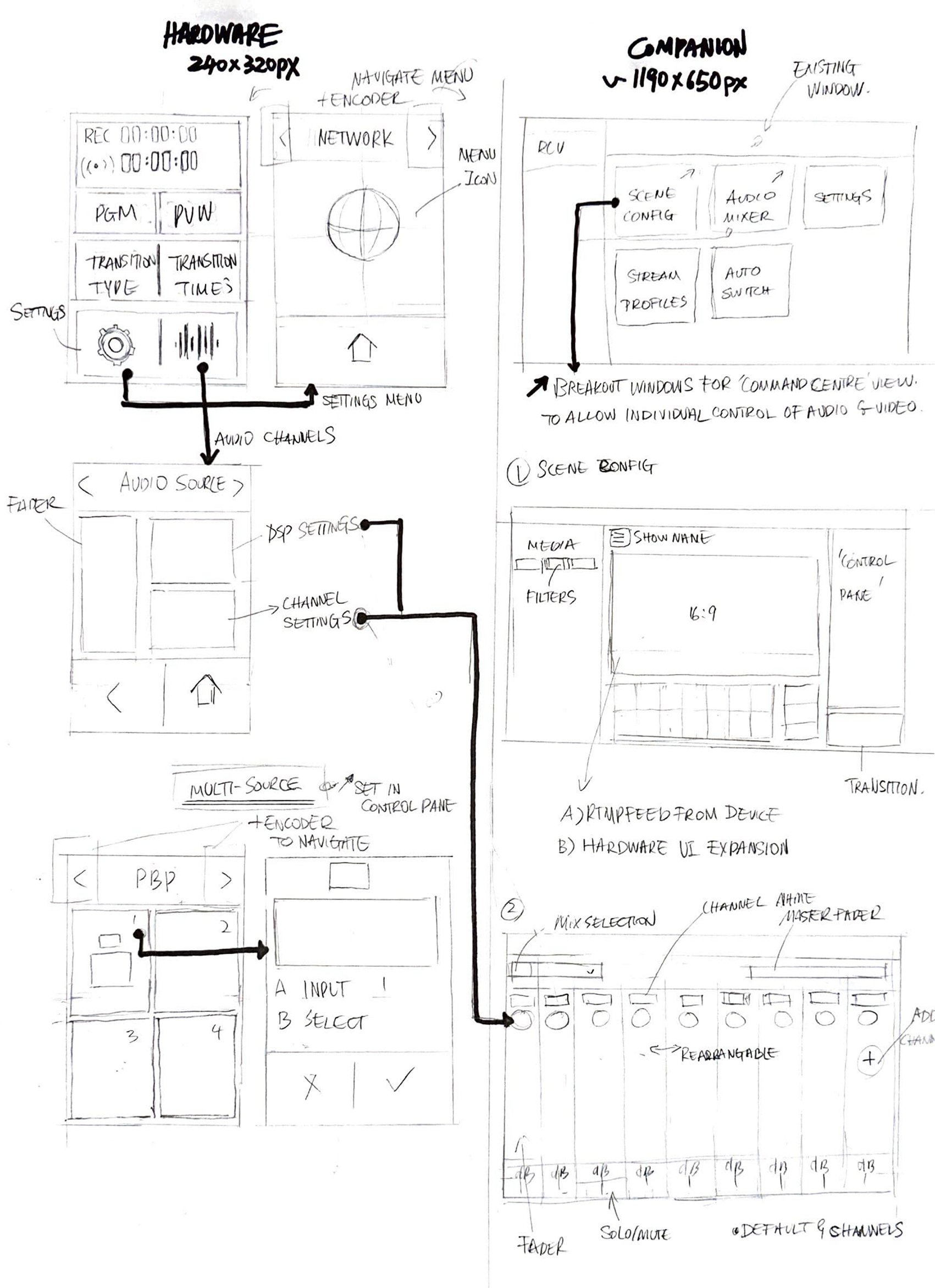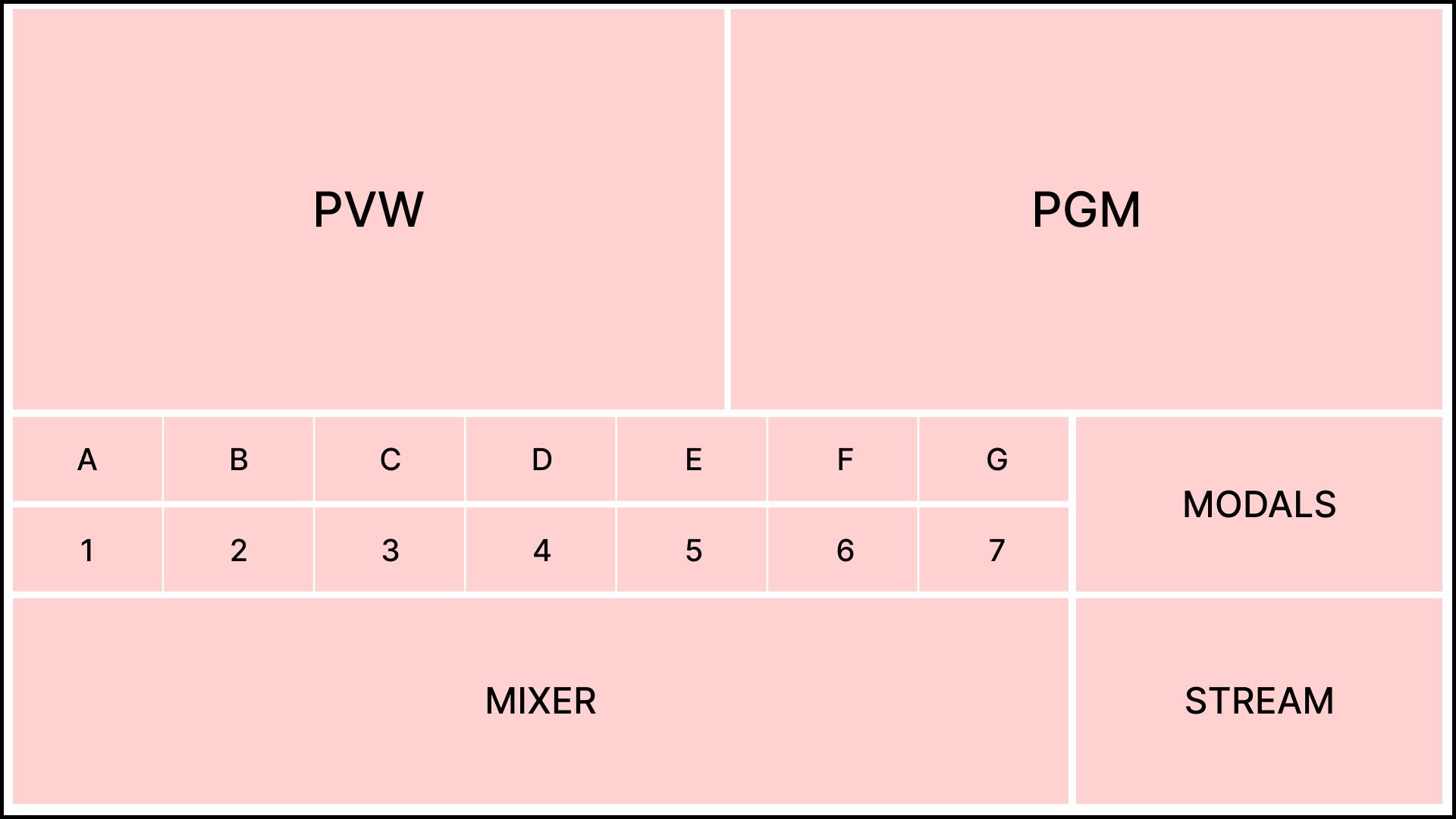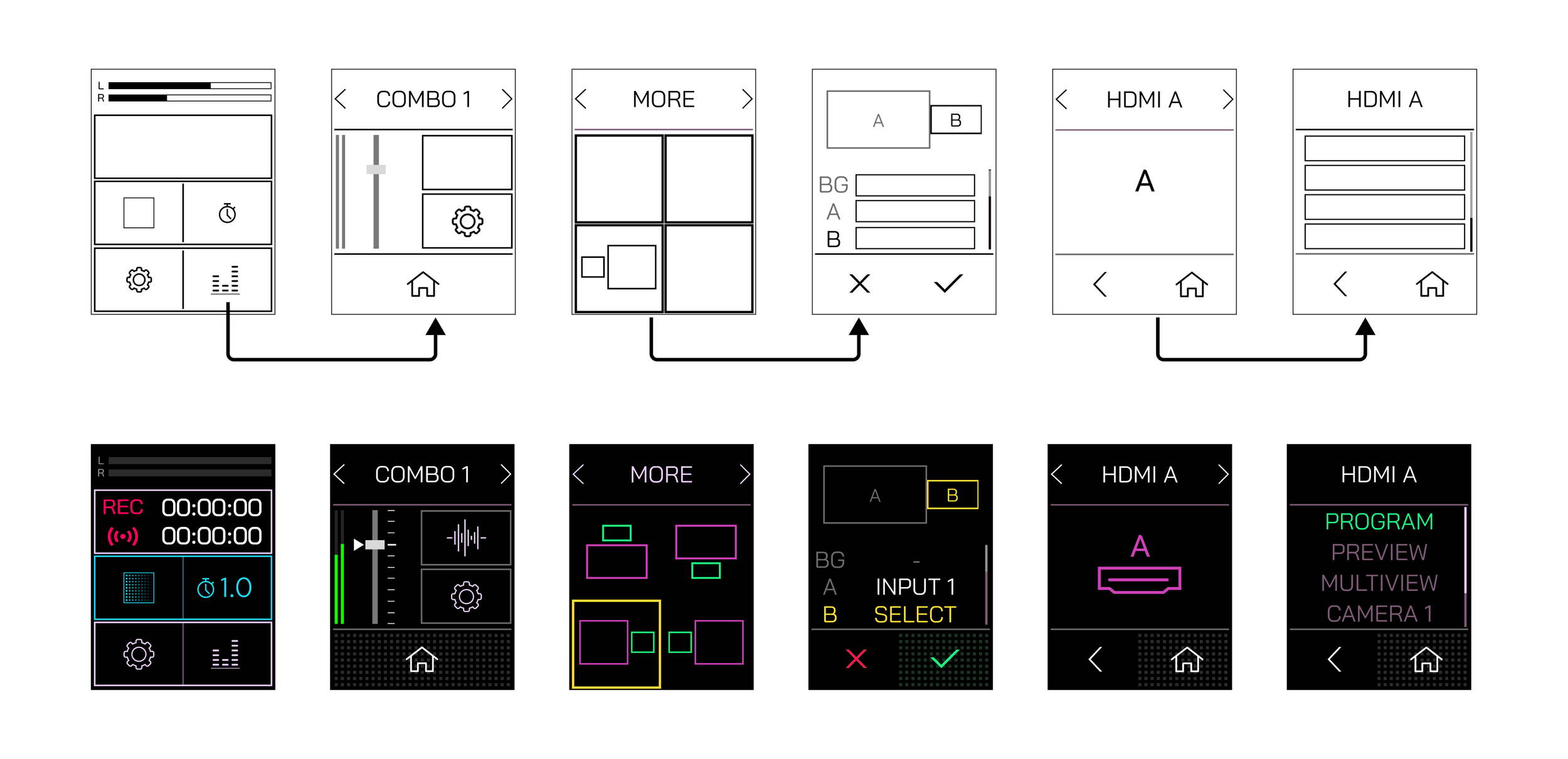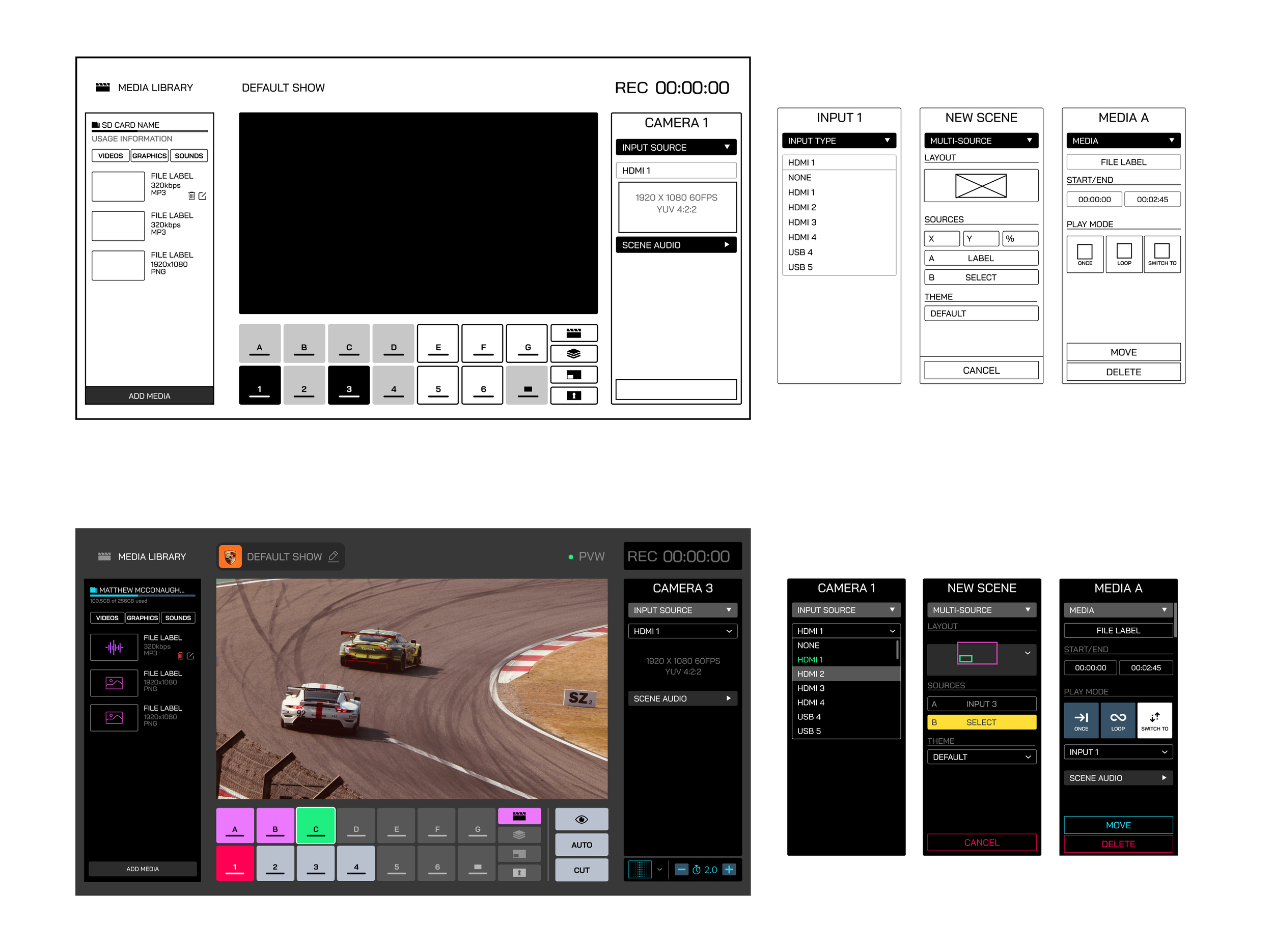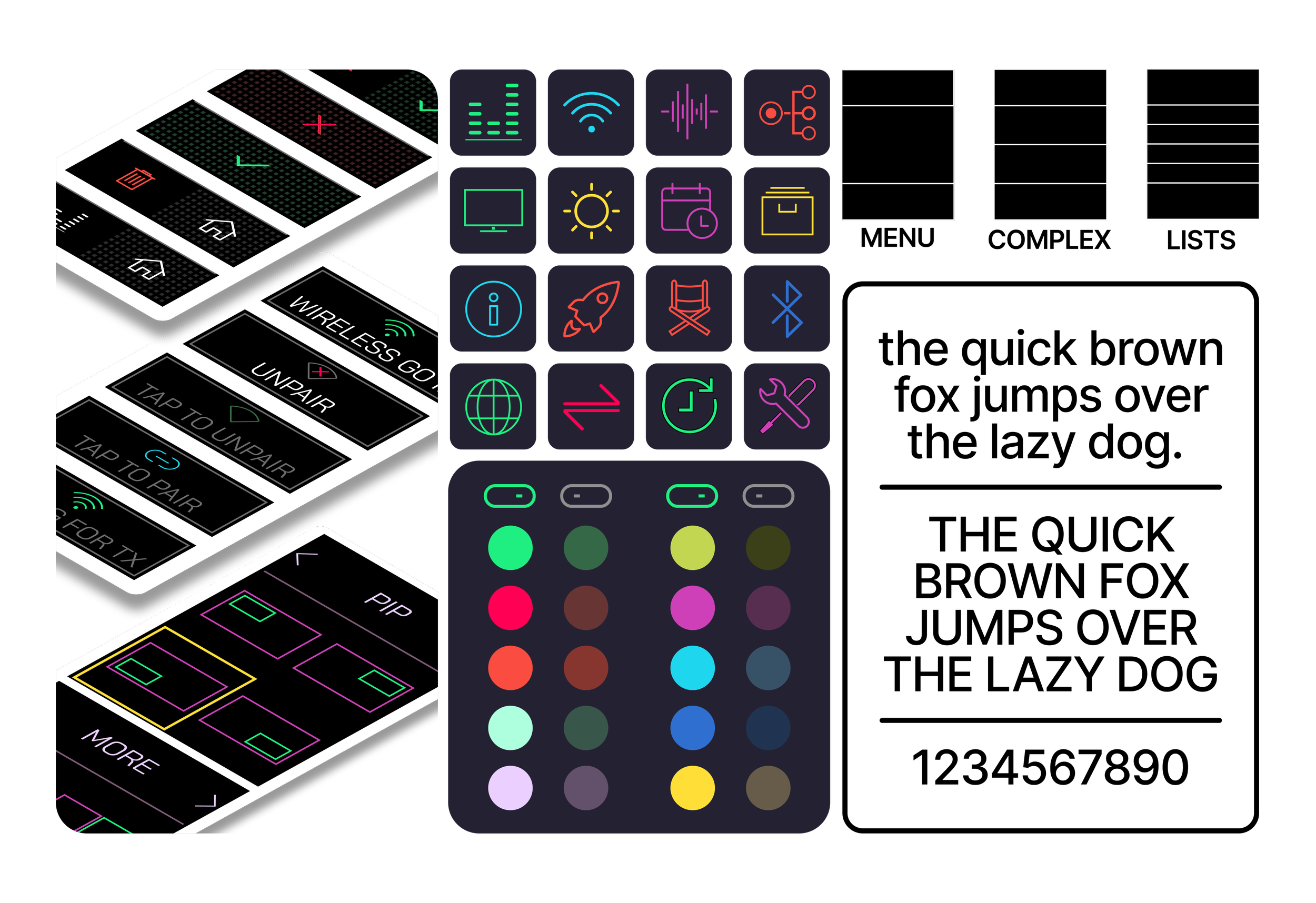RØDECaster Video
From Concept To Creation
The team had been wrestling with a question for some time– “How do we blend professional-grade video and audio tools into one intuitive console — something creators can rely on without juggling multiple devices?”
There were concepts already on the table, but the challenge wasn’t just about adding features — it was about asking the right questions for our potential consumers.
One Step’s The First Step
To truly understand our users, we led focused workshops and usability tests with a network of creative professionals.
While development progressed in parallel, these sessions provided critical insights that shaped our early design decisions and ensured we were building something creators actually needed.
The Process
Research
We began by benchmarking existing tools and connecting directly with creators through interviews to uncover real-world pain points. Patterns emerged through affinity mapping, leading to focused personas that kept us grounded in user needs.
Design
From there, we brainstormed ideas, translated them into wireframes, and gathered early feedback to guide every iteration. High-fidelity designs and interactive prototypes brought the vision to life, ready for real-world testing.
Evaluate
Through usability testing and ongoing iteration, every detail was refined—not for perfection’s sake, but to create an experience that feels intuitive from the first interaction to the final session export.
Face to Face With Professionals
With access to a vast platform of customer data and thousands of professionals at our fingertips, we kicked off the project by selecting key industry experts from our network for face-to-face studies of early prototypes.
These in-depth sessions provided a treasure trove of feedback that shaped our design direction and highlighted real-world needs:
“The solutions I have available are really un-intuitive and extremely slow to get started with”
“I need two separate systems to handle my audio and my video which is not ideal”
“It would be great if I could easily create scenes, manipulate my media and have basic key controls at the drop of a hat without having to fiddle around too much”
Rising Above The Crowd
We immersed ourselves in the market, by experiencing—trying, testing, and living with the products creators rely on. We dissected every detail, debating what worked, what didn’t, and what we dreamed could exist.
This deep dive wasn’t was about charting a path to create something extraordinary; a solution that would seamlessly unite functionality, simplicity, and innovation at a perfect intersection.
Findings
-
Many products in the market prioritise video functionality while leaving audio processing as an afterthought. External gear is often required to achieve professional-grade sound, adding cost and complexity.
-
Solutions that combine power and versatility are often bulky and expensive, making them less accessible for smaller productions or mobile creators.
-
Most devices rely on multiple external tools for audio integration, remote control, or advanced scene management, leading to disconnected workflows and reduced efficiency.
-
Traditional switchers overwhelm users with dense button layouts and unintuitive designs, creating a steep learning curve for solo operators and smaller teams.
Balancing User Needs.
During our face-to-face sessions and surveys, content creators and podcasters (our core audience) shared exciting ideas for additional features.
Some power users suggested 4K resolution, SDI inputs, and NDI inputs, aligning with high-end broadcasting standards.
While these features were desirable, we had to ensure the product remained accessible at an affordable price point and focused on the workflows most relevant to our target users.
MoSCoW Prioritisation Analysis
| Priority | Features | Reasoning |
|---|---|---|
| Must Haves |
Recording+Streaming of multi-camera production Overlays, Media, Keying Seamless audio mixing with Wireless Integration |
Core functionalities needed to meet the primary workflows of content creators and podcasters. |
| Should Haves |
Customisable layout and advanced controls RTMP stream feed Network driven companion app control Auto–Switching |
Improves usability and flexibility without driving up costs. |
| Could Haves | NDI Support | Possible via firmware update using the network port. |
| Won’t Haves | SDI Inputs 4K support |
Excluded to maintain affordability; HD suits target users. |
The Art Of Simplification
In designing the RØDECaster Video, we recognised that our users needed an intuitive setup that minimised cognitive load and eliminated common frustrations.
With that in mind, we simplified each component of the device, from button layout to connectivity options.
-
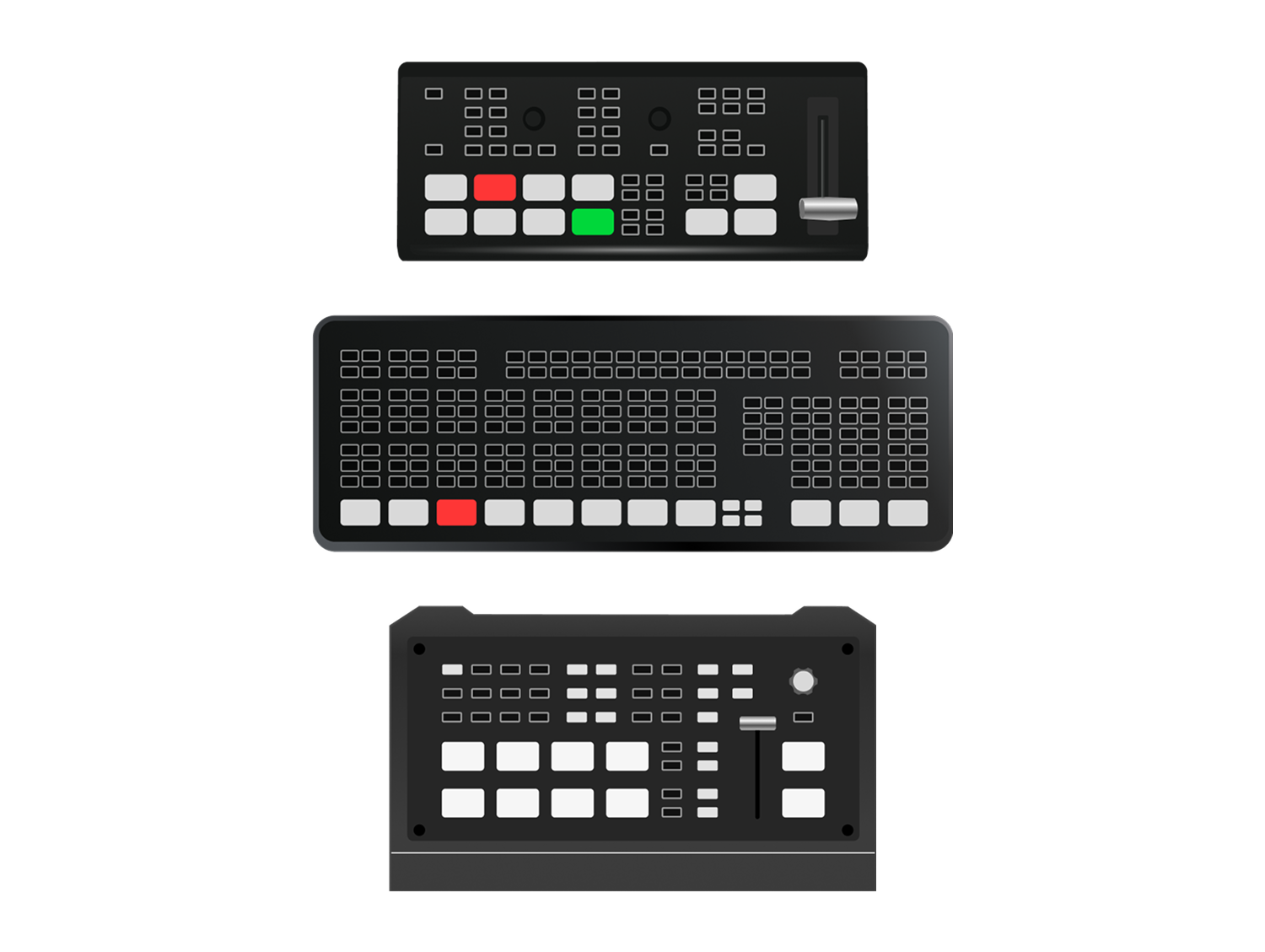
Buttons
Traditional, established switchers feature overwhelming button layouts with excessive options, creating confusion during high-pressure moments.
-
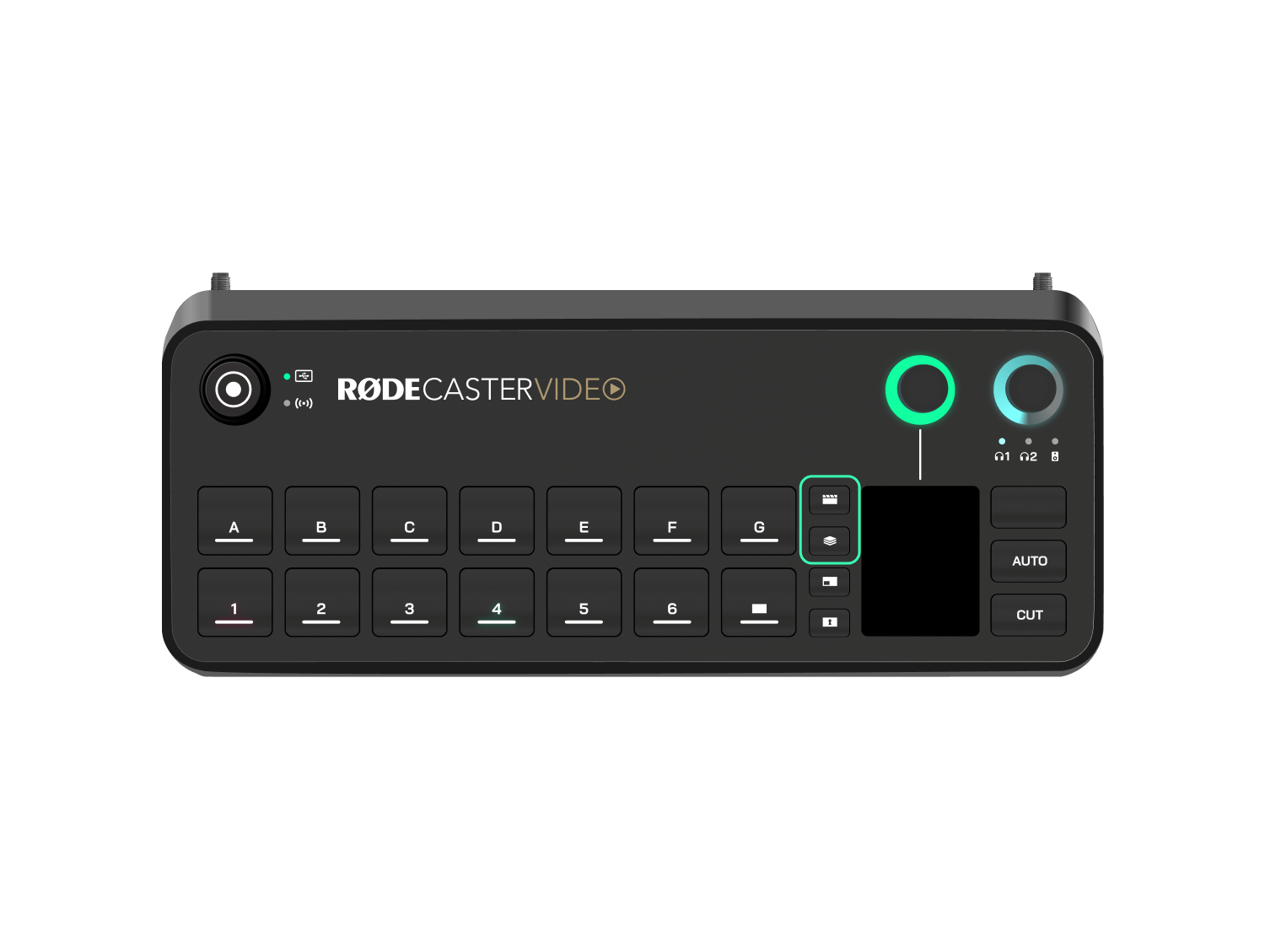
Contextual Bank Switching
Our design system organises scenes, media, and overlays into intuitive banks, allowing users to access each category with a single press. By reducing the number of physical buttons, we minimised visual clutter and enhanced usability.
-
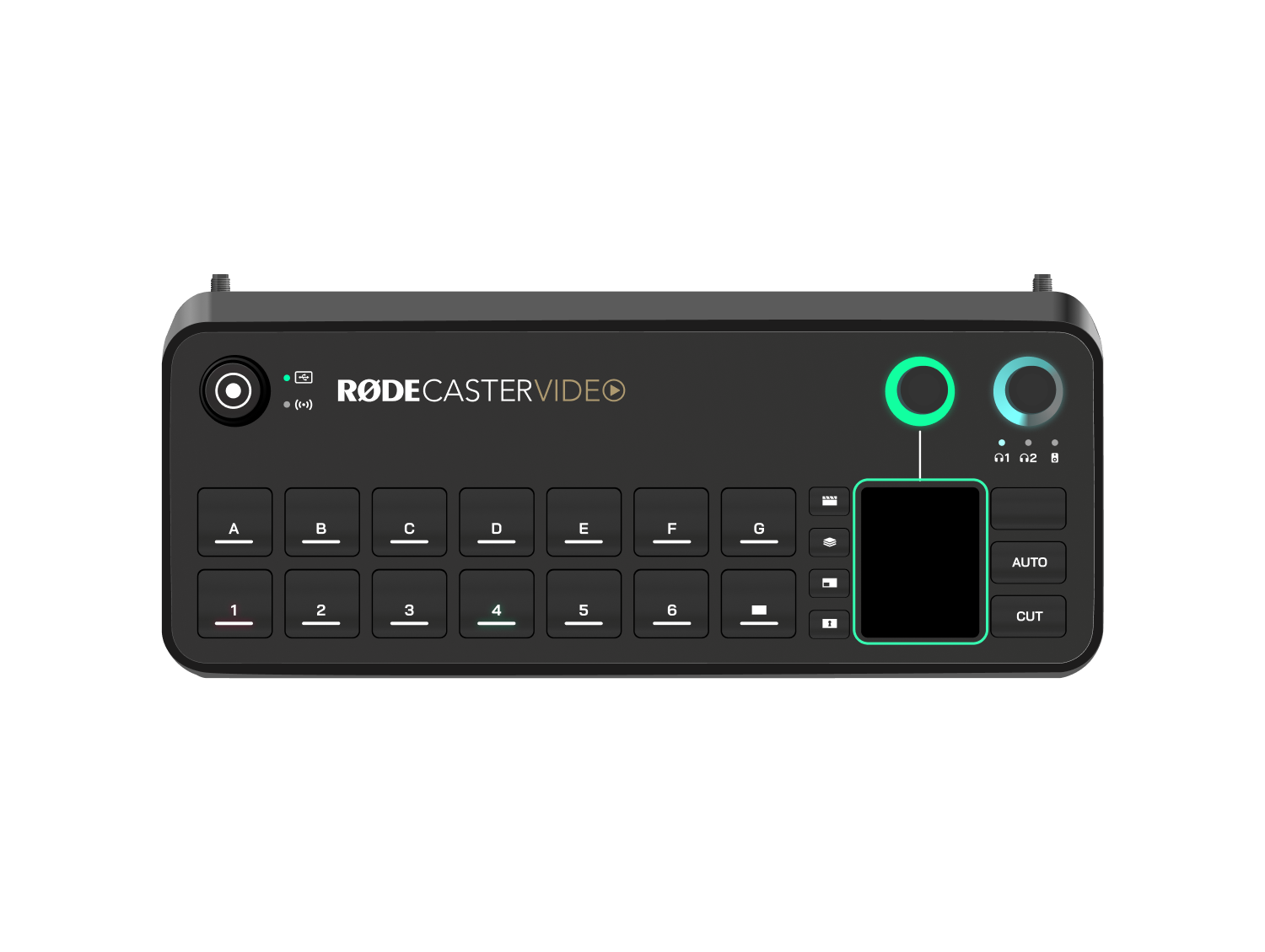
Touch Screen
The LCD screen offloaded many of the settings and controls typically handled by physical buttons. This allowed us to shift less commonly used functions to a screen-based interface, where they could be accessed intuitively and only when needed.
A Hands-Free Approach
The idea of intelligent auto-switching was born from conversations with content creators and podcasters.
They described juggling multiple cameras and scenes while switching live, an experience many likened to “trying to pat your head and rub your stomach while running a marathon.”
We knew there had to be a better way—a solution that allowed creators to focus on their craft, not their controls.
Putting It All Together
A brainstorming session with all ideas were captured with the product manager, fellow designers and engineers.
Sketches and Wireframes.
Initial sketches of the main flow of the interaction of the Hardware UI and the companion app as they needed to be thought out together.
Features that could be adjusted on the fly on the hardware needed to be reflected real-time on the companion app and vice versa. Hence they needed to work harmoniously creating a smooth and connected user experience.
Wireframing Hardware UI and Companion App interactions
Zoning for a highly effective multi-view layout
The sketches were quickly put into a low-fidelity design prototype to test simple flows for users. Since the designs incorporated hardware as well, iPads with buttons and knob interactions had to be mocked up.
These flows were tested and feedback collected to fine tune the designs.
Hardware
Software
Feedback
Our firmware and software version sprint release schedule meant we could carefully test each new functionality as it became available. With such a huge and complex feature flows, this was an ideal way to iterate into the sprint workflow.
Key Insights
85%
Of our interviewees found the UI intuitive and harmoniously working within the first 10 minutes of use until after a stable and spec-ready firmware release.
78%
Highlighted and praised the multi-view screen and its usability – citing alignment with their workflows and the potential to boost efficiency.
67%
Preferred touch interactions and often were driven towards touch based interactions. Due to the hardware constraints, we focused on streamlining the encoder-based navigation with LED behaviours of the light rings.
Feature Requests.
-
Request for 4K was high, but price constraints led us to optimise for high-quality HD instead.
-
Due to the simplistic interface design and existing, powerful audio solutions – our users iterated what we were already thinking; to make the RØDECaster Pro II series be compatible with the RØDECaster Video, allowing physical control over the audio. This was added as the first line of feature updates in the roadmap.
-
A custom Stream Deck plugin was developed specifically for this product, allowing creators to operate the system remotely and streamline their workflow.
-
NDI didn’t launch with the device, but it was already uncovered during research and put on the product roadmap. This structure allows a product to ship quick to market and enables a continual value addition to the product which prolongs it’s market lifecycle.

